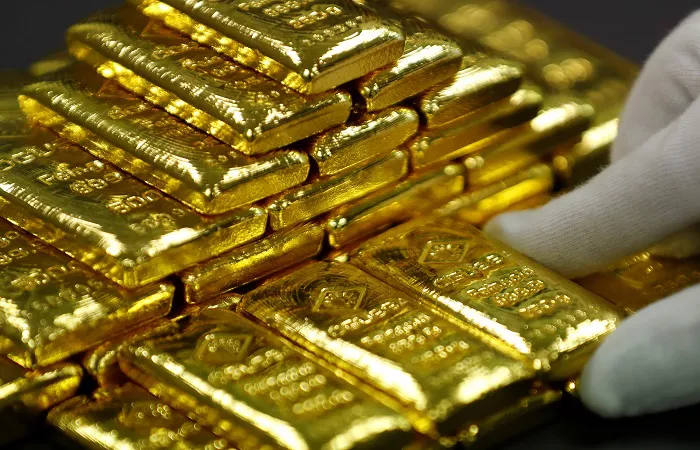As global markets grapple with a storm of fiscal challenges and geopolitical tensions, investors are increasingly seeking refuge in gold. In 2025, the yellow metal has not only outperformed equities but has also become a cornerstone of portfolio defense strategies across demographics—from billionaire investors to retail buyers bracing for economic shocks.
Marc Faber’s Golden Bet on Crisis
Marc Faber, the contrarian investor famously dubbed “Dr. Doom,” has long maintained a significant allocation to gold in his portfolio and continues to champion the metal as insurance against financial collapse. Faber has repeatedly warned about an imminent debt crisis, spiraling inflation, and collapsing asset values—concerns that seem to resonate deeply in the current macroeconomic environment.
“My sense is that a debt crisis is inevitable,” Faber said in a recent interview, reiterating his longstanding pessimism toward fiat-based financial systems. According to Business Insider, gold constitutes about 25% of Faber’s personal portfolio, a strategy mirrored by many of his clients, who have been steadily increasing their exposure to precious metals in recent quarters.
From Wall Street to Preppers: The Demand Is Widespread
Faber’s views, once considered extreme by mainstream standards, are finding a wider audience. More everyday investors are flocking to gold, citing everything from inflation worries to geopolitical instability. These anxieties are not confined to institutional portfolios—retail demand has surged as well.
Data from the World Gold Council shows that global demand for gold bars jumped to 257 metric tons in Q1 2025, marking a 13% increase compared to the same period last year. Joe Cavatoni, a strategist at the Council, attributed the surge to growing concerns about the U.S. dollar, economic softness, and rising government deficits.
Interest in gold has also spiked online. According to Google Trends, searches for “gold bars” rose significantly during key events such as the announcement of U.S. tariffs on Canadian and Mexican imports and Moody’s downgrade of U.S. sovereign debt.
The Rise of the ‘Prepper Bar’
Gold isn’t just being bought—it’s being brought home.
Genesis Gold Group, a company catering to self-described “preppers” and “homesteaders,” has seen demand skyrocket. The firm recently introduced a “prepper bar,” a gold product that can be broken into smaller pieces for trade in a crisis. CEO Jonathan Rose said the bar’s sales jumped 20% in the first quarter of 2025, coinciding with rising global tensions and U.S. tariff plans under President Donald Trump.
“About 70% of our clients now insist on taking physical possession of their gold,” Rose said—up from just 20% in previous years.
This surge in physical demand reflects a broader shift in sentiment, particularly among communities such as those on the r/preppers subreddit, which has grown by over 350% since 2020. Threads frequently debate whether to hold cash or convert savings into precious metals, echoing an emerging narrative that gold and silver serve as the ultimate backstop in the event of currency collapse.
Tariffs, Inflation, and the Dollar
While Trump’s recent decision to delay the imposition of 50% tariffs on European imports until July 9 has calmed markets temporarily, uncertainty still looms. Gold dipped slightly to $3,346.89 on Monday—down 0.3% after a Friday gain of 1.9%—but analysts say the broader uptrend remains intact.
The Congressional Budget Office projects that recent tax cuts and spending increases could add $4 trillion to the U.S. federal deficit over the next decade. The resulting pressure on the dollar has fueled a 25% surge in gold prices year-to-date, outpacing the S&P 500, which is down roughly 1% during the same period.
“The market is still very nervous about fiscal sustainability,” said Michael Brown, a senior research strategist at Pepperstone. He added that while recent tax reforms have renewed deficit concerns, there’s room for those fears to ease—if lawmakers revise the bill to reassure bond markets.
In a sign of shifting sentiment, Goldman Sachs recently cut the probability of a U.S. recession this year from 45% to 35%, while Barclays scrapped its mild-recession forecast altogether. Yet even with improved growth outlooks, few expect gold demand to evaporate.
Analysts: Gold Rally May Pause, But Not Reverse
Michael Boutros, senior technical strategist at StoneX, cautioned that some of the rhetoric surrounding the economy may lean toward fearmongering. However, he emphasized that as long as investors remain unsettled, demand for gold will persist.
“Even after trade tensions ease, buyers will likely wait to see how tariffs affect economic growth,” Boutros said. “The rockier things get, the more gold is going to find footing.”
Cavatoni of the World Gold Council concurs, noting that gold prices have strong fundamental backing and are likely to trend upward through the remainder of 2025. UBS Global Wealth Management recently echoed that sentiment, maintaining a $3,500 target for gold by Q1 2026 and advising clients to raise their allocation to the metal amid dollar weakness.
Related topics:
- India Surpasses China in Gold Purchases, Buying 51% More in Three Months
- Qilu Bank Enhances Support for Small Businesses with Innovative Financial Tools
- Bitcoin Poised for a Surge Amid Gold’s Delivery Delays, Expert Claims


